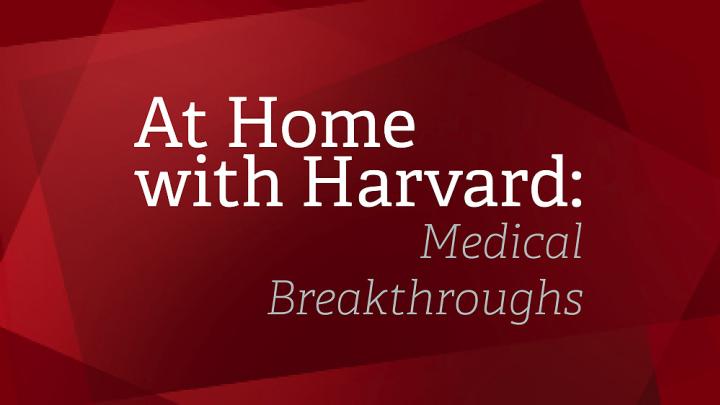This is the seventh installment in Harvard Magazine’s series “At Home with Harvard,” a guide to what to read, watch, listen to, and do while social distancing. Read the prior pieces, featuring stories about Harvard’s Arnold Arboretum, famous and not-so-famous Harvardians in the movies, Harvard’s literary scene, and more, here.
within Harvard’s Medical School, School of Public Health, and Faculty of Arts and Sciences, researchers are making pathbreaking medical discoveries faster than most people can keep up with. Below, find a selection of Harvard Magazine’s coverage going deep into the ideas and personalities that will shape the medical care of tomorrow in the battles against diseases from cancer to diabetes to COVID-19.
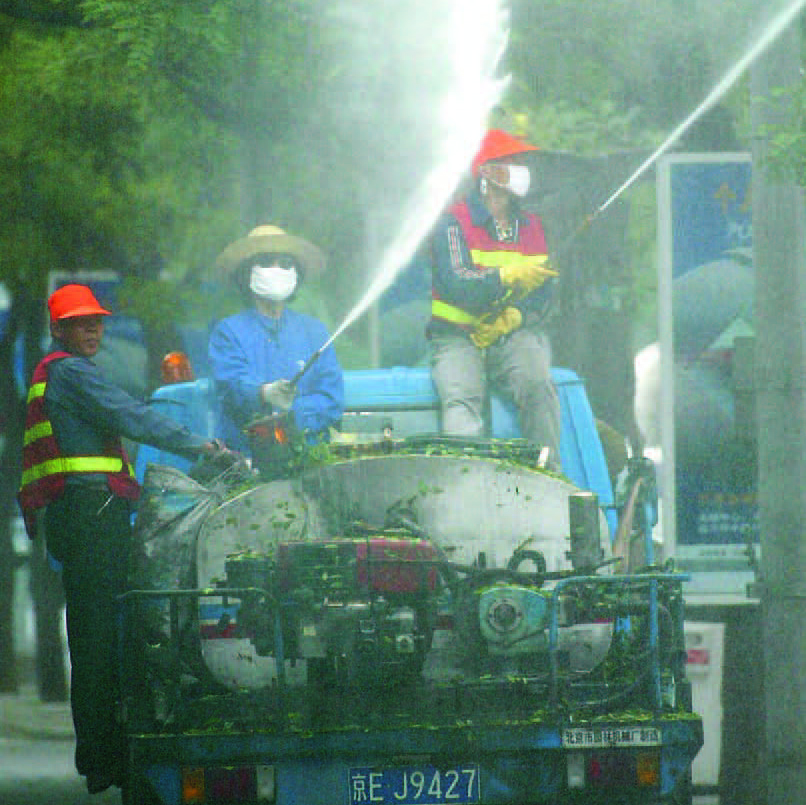
Workers disinfect a Beijing street as part of the government’s effort to eradicate SARS
Photograph by Goh Chai Hin/AFP/Getty Images
Sometimes, the stories you are forbidden to write about turn out to be the most interesting. That was true of SARS. At a Harvard Medical School reunion symposium in the late spring of 2003, a physician from Toronto, where the outbreak still raged, spoke frankly to his classmates about the failed government response, the hubris of Western medicine, and the economic damage caused by the epidemic. Warned that attendance risked exposure to the virus, I sat in the back row of the auditorium, fascinated by his candid, off-the-record remarks. Years later, when the epidemic was safely in the rearview mirror, his story became the launch point for a feature article about epidemics and the dire need to better prepare for the next big one. I never thought the big one would be another coronavirus—bird flu was the anticipated culprit—so I followed reports of a pneumonia-like illness spreading in China early this year with a dismaying sense of déja vu. But when I finally wrote about COVID-19, it was with a growing sense of hope, sparked by extraordinary advances in technology and scientific cooperation, that we will rise to this challenge.
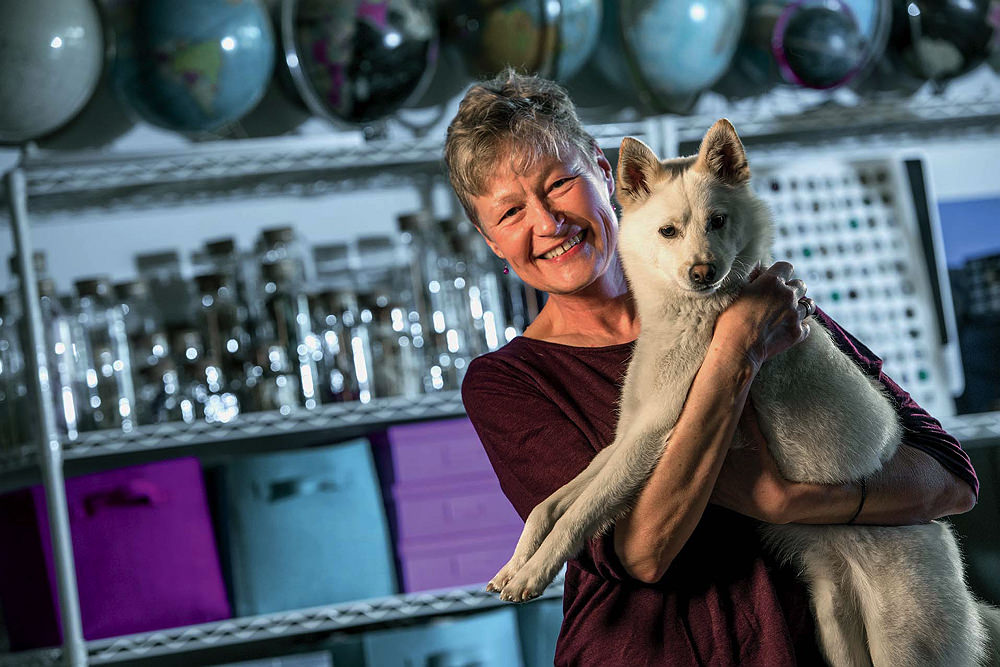
Linnea Olson, shown with her dog, Kumo, has survived 13 years with lung cancer.
Photograph by Jim Harrison
Cancer patients and their loved ones endure wrenching emotional and physical pain. Sharing that takes tremendous courage and strength. The people in this feature, “Targeting Cancer,” are all remarkable: Linnea Olsen, a patient who has defied the odds; Alice Shaw, the physician scientist who is her doctor; Nir Hacohen and Catherine Wu, and Arlene Sharpe and Gordon Freeman, two married couples who have dedicated their work to understanding the role of the immune system in cancer, and many others. Targeted, personalized cancer medicine is still in its infancy, but holds tremendous promise.
~Jonathan Shaw, Managing Editor
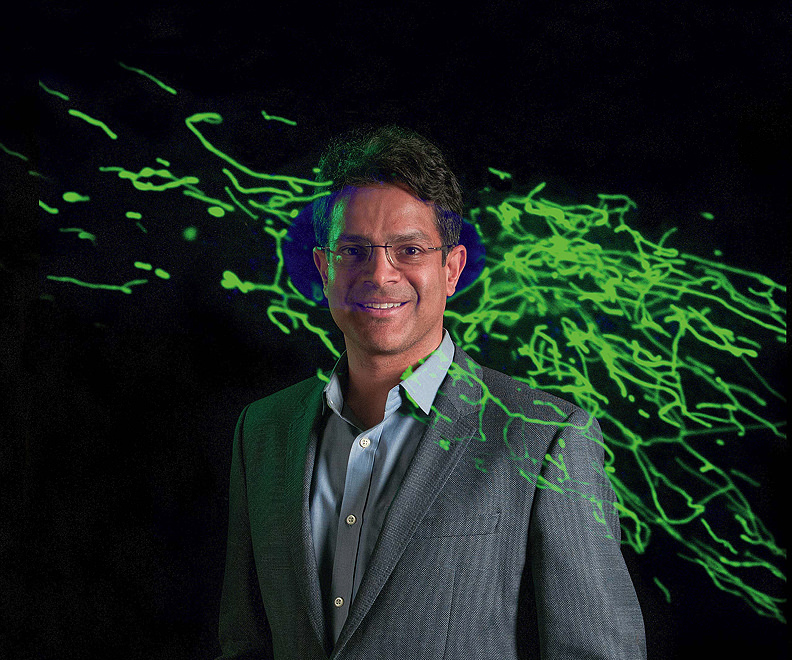
Vamsi Mootha with an image from his lab showing thread-like mitochondria (green) moving within a cell.
Portrait and collage by Jim Harrison; image of mitochondria courtesy of Vamsi Mootha and the Mootha Laboratory
“Mitochondria” is probably not a word that inspires much excitement, or much of anything, for most readers. But this engaging and human profile of Harvard Medical School professor Vamsi Mootha, who is obsessed with these tiny organelles that power our cells, might change your mind. Mootha thinks the key to mitochondria’s crucial importance to health and disease may be their role in processing oxygen. “We think of oxygen as a life-giving molecule,” he says, but it can actually be highly toxic; early in Earth’s history, species had to evolve to cope with exposure to the increasing levels of oxygen in the atmosphere. Mitochondria appear to be key to that process.
~Marina Bolotnikova, Associate Editor

At Brigham and Women’s Hospital, physician Scott Weiner has worked to improve emergency-room guidelines for issuing opioid prescriptions.
Photograph by Jim Harrison
Since writing “The Opioids Emergency” more than a year ago, I’ve thought a lot about the physicians and scientists I talked to, each chipping away at their own corner of an overwhelming crisis: the addiction-medicine doctor, the health-policy specialist, the emergency-room physician, the scientists searching for non-addictive alternatives for treating pain. The piece, like the epidemic, turned out to be kind of a mosaic. (And at a pair of symposia Harvard and the University of Michigan hosted on the problem, social scientists, historians, legal experts, and patients added their efforts and experience.) I think there is an element of this story that reminds me powerfully of what’s happening in our current moment, as the coronavirus pandemic sweeps the globe and millions of scientists and healthcare providers are furiously at work, in their own corners of the crisis, racing to save lives, to slow infection, to find a cure.
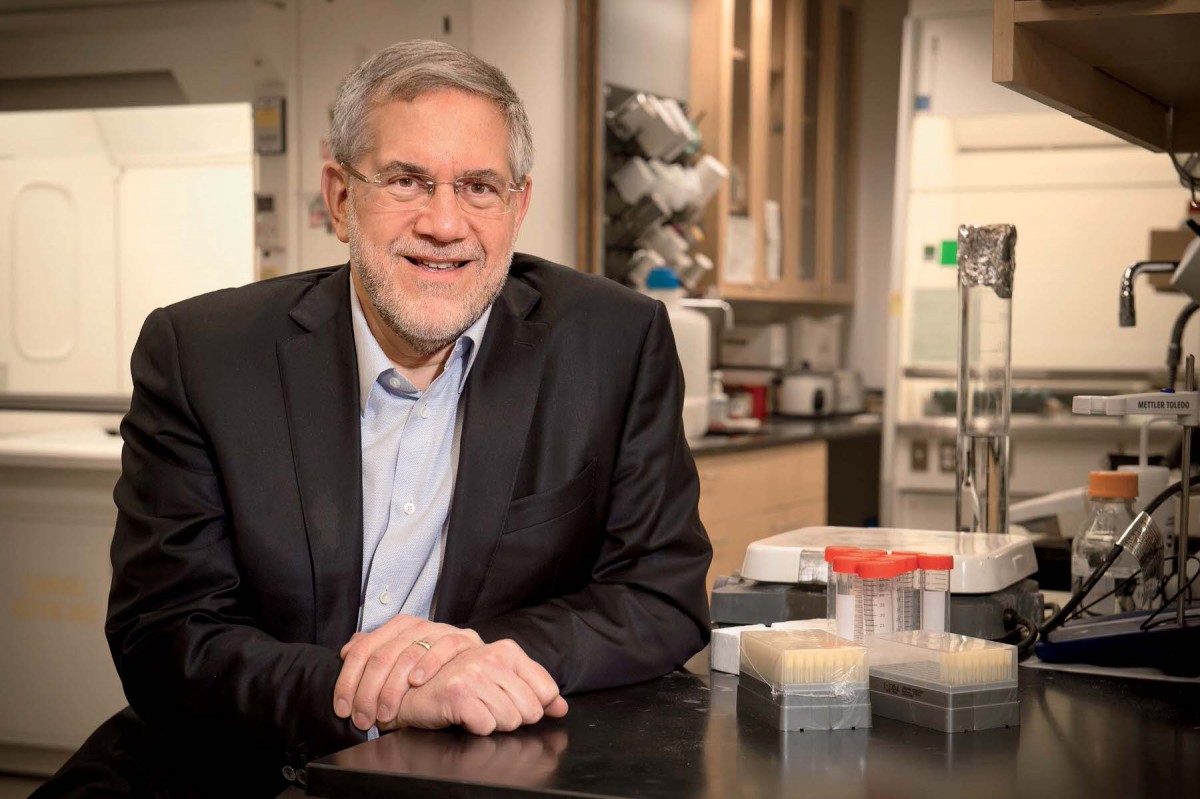
Steven Hyman, director of the Stanley Center for Psychiatric Disease Research
Photograph by Stu Rosner
This story is about how the study of genomics rapidly unlocked vast new possibilities for understanding schizophrenia, a disorder that, as the decades wore on, had stubbornly remained mostly a mystery to science. As psychiatrist and Harvard professor Steven Hyman says early in the piece, “I, frankly, didn’t know all that much more when I was at [the National Institutes of Health] in the late 1990s than careful observers knew at the turn of the twentieth century.” Then suddenly the field opened up. But this story is also about the complexities that remain, and how breakthroughs lead not only to answers, but also to deeper questions.

A serpentine proximal tubule (light pink) snakes through the center of a multi-layer network of blood vessels (hot pink), all created using a 3-D printer.
Image from Scientific Reports
I spent a lot of time in the lab with bioengineer Jennifer Lewis and her team for this story, “Building Toward a Kidney,” about their pathbreaking work in the push for a functioning artificial human kidney. I picked up a whole new vocabulary—“bioprinting,” “proximal tube,” “viscoplastic matrix”—and a new appreciation for all the tiny, hard-won accumulations of knowledge that go into each scientific discovery. I remember Lewis telling me at one point that every success (and she has had some important ones in this quest) is built on a series of failures: experiments that didn’t quite work, ideas that didn’t quite pan out. “That’s science,” she said. The kidney she and her team are working toward building with 3-D printers is still years away, maybe 10, maybe 50. But it was illuminating—and beautiful, really—to have a chance to glimpse a bit of that process, as they keep pushing forward.
~Lydialyle Gibson, Associate Editor
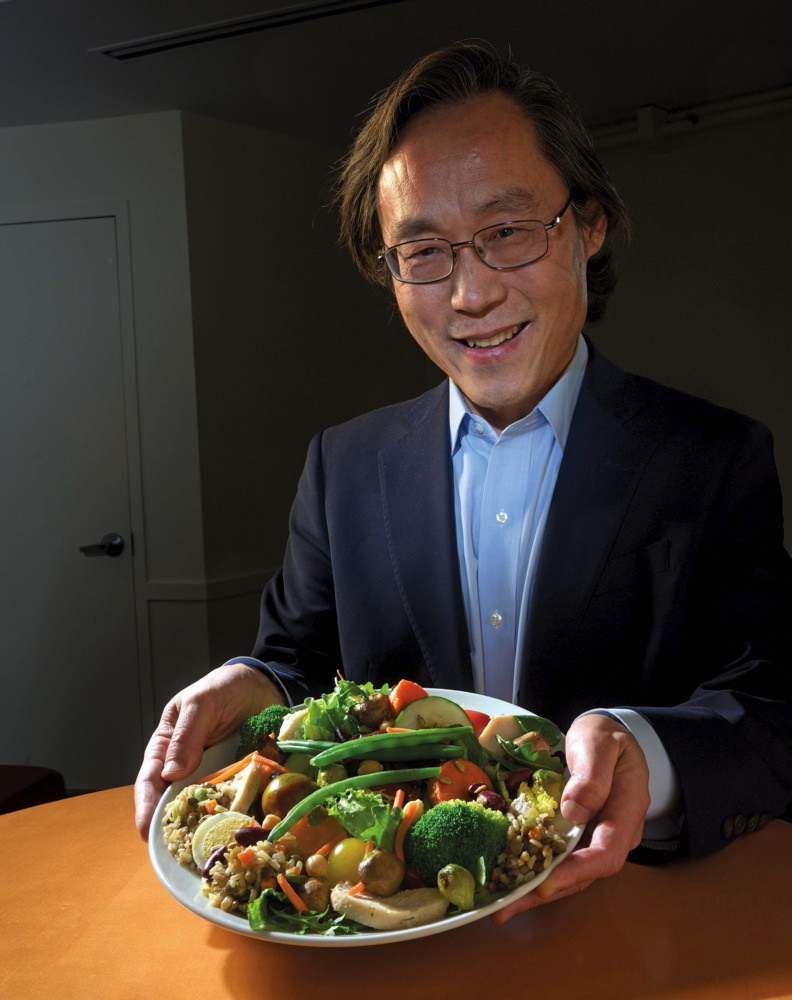
Hu believes a plant-based diet can help feed a growing population in a healthy, sustainable way.
Photograph by Jim Harrison
I spent months researching and writing “Healthy Plate, Healthy Planet,” a profile of nutritional epidemiologist and chair of the public-health school’s nutrition department Frank Hu, who has spent his career studying which dietary patterns lead to the fewest chronic diseases. Right now, though, his focus is not just on individual human health, but also population and planetary health. He thinks adopting a plant-based diet could help all three at once.
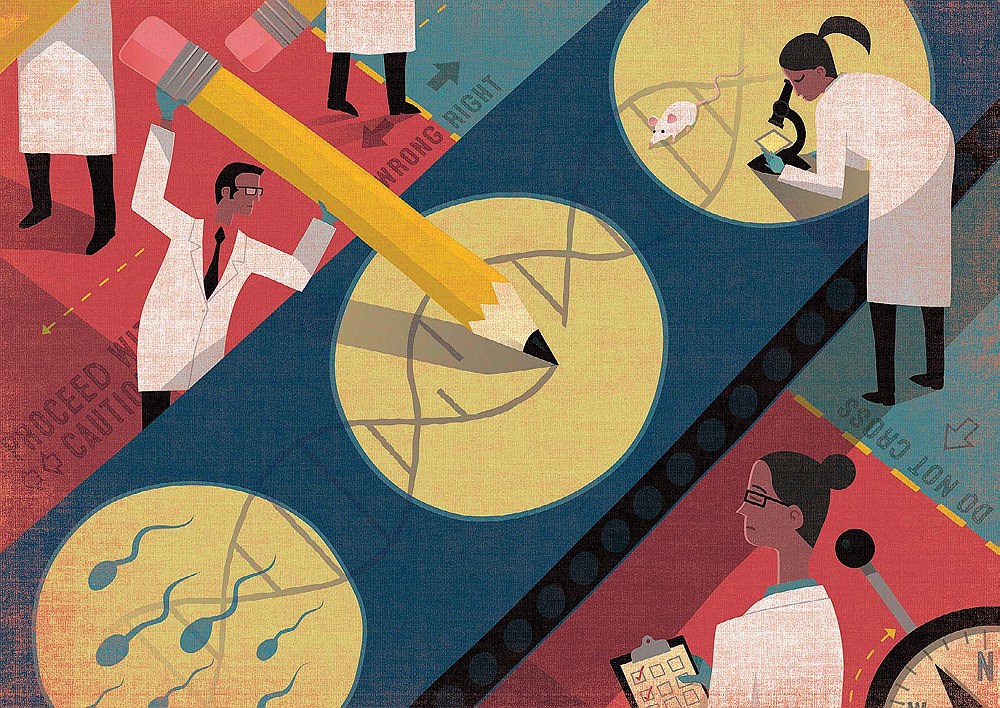
Illustration by Rocco Baviera
The gene-editing technology CRISPR has been described as a word processor for DNA, but the process frequently introduces new errors to genomes. I liked this article, “Gene Editing and Ethics,” about a new gene-editing technique called “base testing,” developed at the Broad Institute of MIT and Harvard in 2016 by professor of chemistry and chemical biology David R. Liu, which gets into the promise and ethical quandaries presented by this new technology.
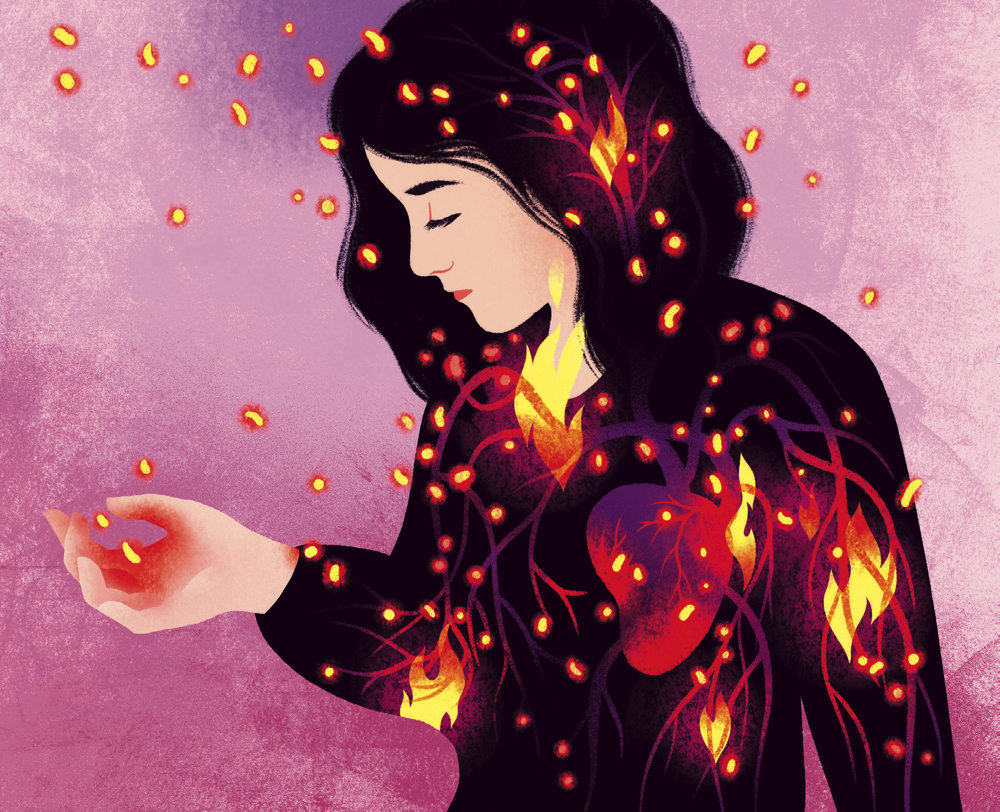
Illustration by Kasia Bogdanska
This fascinating, in-depth feature discusses how our inflammatory immune-system responses lead to a host of chronic conditions including dementia, Parkinson’s Disease, cancer, and diabetes. How do our bodies develop inflammation? How can we control inflammation and boost our immune system? Jonathan Shaw answers these questions, and many more, conferring with leading researchers in a rapidly developing field.
~Jacob Sweet, Staff Writer/Editor
More from “At Home with Harvard”
- Spring Blooms: Your guide to accessing the Arnold Arboretum as the seasons turn in Boston
- Harvard in the Movies: Our favorite stories about Harvardians on screen
- The Literary Life: Our best stories about the practice and study of literature
- Night at the Museum: Our coverage of Harvard’s rich museums and collections
- Nature Walks: Walking, running, and biking in Greater Boston’s green spaces, even while social distancing
- Supporting Local Businesses: Our extensive coverage of local restaurants and retailers, and how you can support them during this time of crisis
